
“My heart’s in the Highlands, my heart is not here;
My heart’s in the Highlands a-chasing the deer;
A-chasing the wild-deer, and following the roe,
My heart’s in the Highlands wherever I go.”
Robert Burns (1759 – 1796), national poet of Scotland.
My wife Shannon is a Texas native and I was born and raised in Glasgow and moved to Farmers Branch in June 2013. We were married not long after I arrived in Texas and we recently decided that a trip to Scotland to visit my family was long overdue. I arranged to fly to Glasgow at the beginning of October and Shannon joined me two weeks later. We flew home to Texas together at the end of the month.
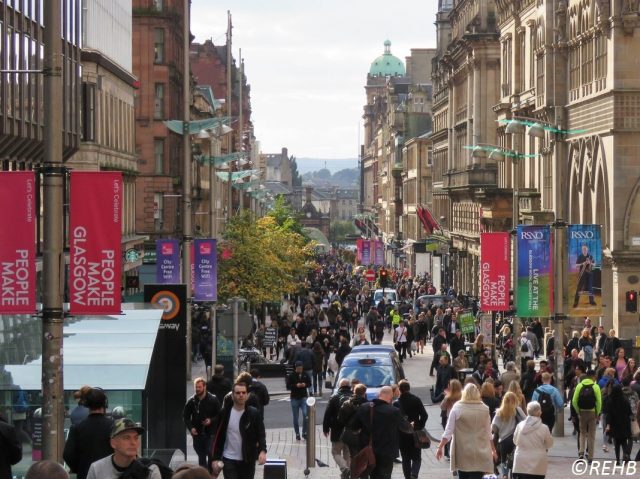
In 2014 I started paying attention to wildlife in our garden in Farmers Branch and discovered that we could record observations on iNaturalist. Two years later this has become our biggest hobby and we spend most weekends hiking in nature preserves in the DFW area and beyond.
I enjoy making wildlife videos and Chris Jackson asked if he could feature the first one I made, about wildlife in our garden, on this website. Since then Chris has kindly featured more of my videos and recently asked me if I would consider writing an article for DFW Urban Wildlife. With a little trepidation I said I would but I was struggling to think of a subject.
We intended to do some wildlife photography on our trip but I wasn’t sure how much wildlife we would actually see. The weather could play a very significant role in changing our plans. Glaswegian comedian Billy Connolly once said “There are two seasons in Scotland, June and Winter”.
Luckily the weather turned out to be very favorable and we returned from our trip with lots of wildlife photos and some video – problem solved !
I found an iNaturalist project named “Wildlife in Scotland” and uploaded photos to it while I was abroad. What follows is based on my iNaturalist calendar for October and is a diary of the wildlife observations we made in Scotland.
October 1
I took an overnight flight from DFW via Newark, and arrived at Glasgow Airport at 7:30am. In the afternoon I took the camera into my parents’ garden in Newton Mearns, a south side suburb of Glasgow. I spotted a Common Carder Bee, a group of Coal Tits feeding on pine seeds, a Great Tit, and an Eastern Gray Squirrel.
Gray Squirrels are an invasive species – they are native to North America and were introduced to the UK in the 1870s. There are now around 2.5 million of them across the UK and they have displaced the native Red Squirrel, of which only 10,000 – 15,000 remain.


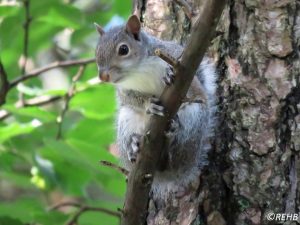
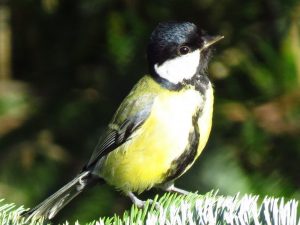
October 2
I visited my sister’s farm near Strathaven, south of Glasgow, and saw the house for the first time as it was completed just after I moved to Texas. A local group of community beekeepers installed a hive at the farm in 2015. This year my nephew Rory was officially the youngest beekeeper in Scotland.
My seven year-old niece is working on her Wildlife Explorer award for Brownies so I took photos for her of some wildlife that she spotted in the garden : a White-tailed Bumble Bee and a Seven-spotted Ladybird whose wing case appeared to be damaged.


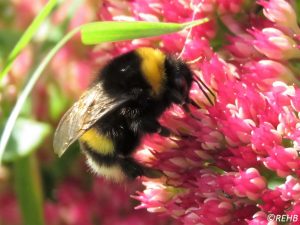
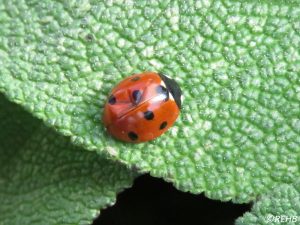
October 3
I went for a walk at Rouken Glen park, near my parents’ house, as there is a pond there and I hoped to see some migratory waterfowl. None had arrived yet, but I did see Eurasian Moorhens and lots of Mallards. I brought the trail camera to set up in the garden at my parent’s house, as they often seen foxes out there at night. With some luck the camera could catch a migrating Haggis as it passed through the garden.




October 4
I had no luck with the trail camera (this became a common theme as the trip went by). I saw some Eurasian Magpies and European Robins at the house, and Eurasian Jackdaws and Common Wood-Pigeons at Pollok Park on the south side of Glasgow.


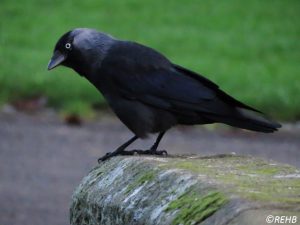

October 5
I spent ages trying to get an ID for a moth I spotted near the house, only to find that it was actually a Caddisfly.
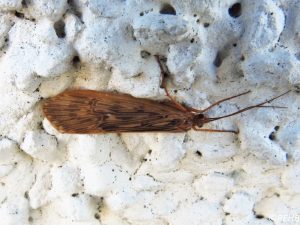
October 6
The UK’s smallest bird, a Goldcrest, visited the garden today. These are in the Kinglet family and look similar to the Golden-crowned Kinglets that visit North Texas over the winter. They’re also similar in that they’re difficult to photograph as they never stop moving !

October 7
I decided to head out before dawn to visit the RSPB (Royal Society for the Protection of Birds) nature reserve at Lochwinnoch, in Renfrewshire. On the way I stopped at a McDonalds’ restaurant for coffee and saw a ubiquitous Herring Gull pecking at discarded food in the car park.
I walked some of the trails at the nature reserve and found a hide (blind) overlooking some bird feeders. I had a very busy time with the camera in that location – I saw Dunnocks, Common Chaffinches, a Great Spotted Woodpecker, Blue Tits, Long-tailed Tits, and a tiny Bank Vole grabbing bird seed that had fallen on the ground below the feeders.
I also saw a Eurasian Nuthatch, which interested the staff in the visitor center – they marked it on a whiteboard they use for notable observations. These are not common in that area and are rarely seen.








October 8
The trail camera picked up nothing overnight. I was disappointed as I had baited it with some chopped ham to entice the foxes to feed there. Two bats were feeding on moths near the street lights outside the house at dusk. I managed to get a fairly poor photo of one of them, but it was good enough to narrow down the ID to a member of the Vespertilionidae family – a Vesper Bat.

October 9
I headed down to the the farm again, to stay for a couple of nights. My sister and her husband farm sheep and have a Christmas Tree plantation with Norway Spruce. My brother-in-law has seen Roe Deer on the plantation and pointed out a likely spot where they may have been gaining access through a fence. I set up the trail camera there, hoping for better luck. My niece pointed out a Sunfly, a species of hover fly, feeding on Sedum in their garden.
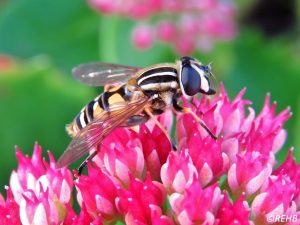
October 10
My sister and I went for a walk at Langlands Moss, not far from the farm. This is a nature reserve with paths through a dense Pine forest, and a boardwalk over a raised bog that started forming at the end of the last Ice Age. Pond Skaters were on the surface of some of the boggy areas but it was a little too late in the year to see much else there. We spotted a pair of Roe Deer does as they darted through the forest and I managed to snap a terrible photo of one of them just before they disappeared. The forest is so dark that nothing much apart from fungus and moss will grow under the trees.
When we got back to the car we saw a Common Buzzard atop a street light nearby. These are related to the Red-tailed Hawks and Red-shouldered Hawks we see in Texas. Both are actually Buzzards, not Hawks, as they are in the Buteo genus. True Hawks are in the Accipiter genus : eg Cooper’s and Sharp-shinned Hawks. It gets really complicated when you consider that people in Texas will call a Vulture a Buzzard ! Blame the English settlers for that one.



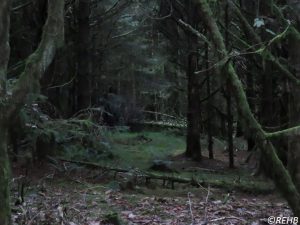

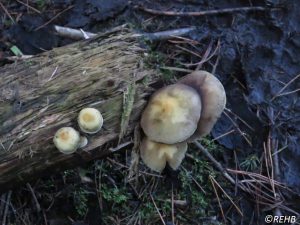

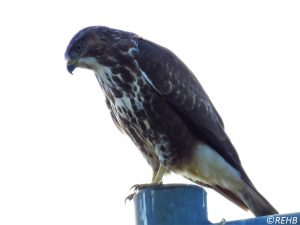
October 13
The trail camera failed to pick up any deer at the farm. I heard a noisy Song Thrush and followed its call until I spotted it at the edge of a field near my parents’ house. I went for another walk at Rouken Glen park and saw Mute Swans and their Cygnets, Black-headed Gulls, Carrion Crows, Tufted Ducks, and some of the wintering waterfowl had arrived – Canada Geese. I put the trail camera back in the garden at the house as I really wanted to get some video of a Red Fox before Shannon’s arrival the following morning. I tried some new bait this time and kept my fingers crossed.







October 14
Shannon arrived and I surprised her with a short video – evidently Red Foxes are partial to shredded cheese ! Last year we had gotten video and photos of Gray Foxes at a cabin on the Paluxy River, near Glen Rose, and we were keen to do the same with Red Foxes in the UK.
October 16
We went for another walk at Rouken Glen park – this time we saw Little Grebes and a Gray Wagtail.

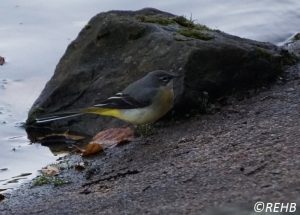
October 18
“Ye lover of the picturesque, if ye wish to drown your grief,
Take my advice and visit the ancient town of Crieff.”
William Topaz Mcgonagall (1825 – 1902), widely considered to be the worst poet of all time to write in the English language.
We traveled with my family to Crieff Hydro hotel, in Perthshire, to stay in a self-catering lodge on the hill above the hotel. The hill is called The Knock of Crieff and the summit offers fantastic views of Strathearn and the Highlands. Shannon and I decided to climb up there the morning after we arrived. We saw lots of birds – Bramblings feeding on berries, Bullfinches, Eurasian Blackbirds, and a Ring-necked Pheasant. The views were truly breathtaking and we enjoyed taking photos of something other than wildlife, for a change !




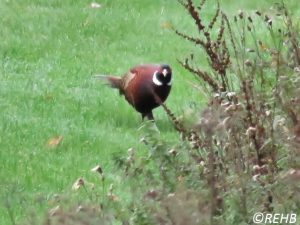

In the afternoon I surprised Shannon with a trip to the Argaty Red Kite center, near Doune. This is a farm in the area where these raptors have been reintroduced by Scottish National Heritage and the RSPB, after they were hunted to near extinction in the UK in the 1800s. The center has a blind for visitors and a small amount of deer offal is placed on the ground for the Kites at 2:30pm every afternoon. The aim of the project is to establish a self-sustaining population so the amount of food that is provided is small. The birds are tagged and monitored and many of the Kites we saw were juveniles, which was encouraging.




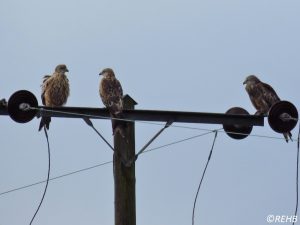
October 20
I recorded some video to capture audio of Owls calling in the woods near the lodge at Crieff – identified later as Tawny Owls. We also saw a Pied Wagtail, and some House Sparrows. These Sparrows are now seen all over the world but their numbers have dropped significantly in the UK in recent years. The cause of this decline is unknown. We left Crieff and headed back to Glasgow in the afternoon.


October 22
We drove to Falkirk early in the morning to visit The Kelpies – 30 metre high horse head sculptures, made of metal. Kelpies in Scottish folklore are shape-shifting water spirits. The statues straddle the Forth and Clyde Canal which opened in 1790 to link Edinburgh and Glasgow. We saw a Great Cormorant and a Gray Heron near the water. These are both very similar to species commonly seen in North Texas.
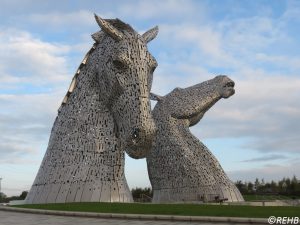


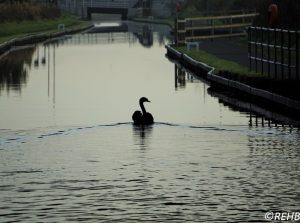
October 24
We went down to the farm for one final stay, and visited Langlands Moss again to see if we could get better photos of the Roe Deer there – no luck, but we did see a Eurasian Wren in the Pine forest. We also saw a Eurasian Kestrel hovering above the fields at the farm, European Starlings, and a White-throated Dipper in the river below the ruins of Strathaven Castle. We helped my niece with some challenges for her Brownie Wildlife Explorer award – taking bark and leaf rubbings of native trees, and building a bird feeder for the garden.


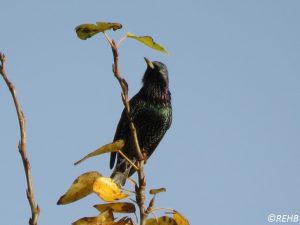


October 25
We took a final walk round Rouken Glen park and spotted some more migratory birds – Eurasian Wigeons. This was the last time we took the cameras outside as the weather finally broke and it rained non-stop on the last two days of our trip. Until then we had been very lucky, as Scotland in October can be a wee bit wet and windy, to say the least ! The weather didn’t affect out travel plans and we returned to Texas on October 28.


The number of species we saw in Scotland far exceeded our expectations – I added observations of 49 species to the “Wildlife in Scotland” iNaturalist project. I knew the names of the common garden birds and some of the waterfowl at the park but I had to research the IDs of everything else – the variety of wildlife really surprised me. I think Shannon and I are more adept at spotting wildlife now, after two years of doing this in Texas, and I definitely noticed more than I ever did when I lived there.
A wise man recently told me “It’s amazing what you can see once you become open to the possibilities.”
Compilation of short video clips from some of the places we visited to view wildlife.
https://www.youtube.com/watch?v=8tkRPJjDu_Q
Links, and some facts and figures about our trip.
RSPB Lochwinnoch Nature Reserve
Wildlife in Scotland iNaturalist Project
Distance traveled by the trail camera on its round trip between our house in Farmers Branch and my parents’ house in Newton Mearns, to record one 37 second video of a Red Fox : 9240 miles.
Number of Haggis spotted on this trip : Zero. I even tried imitating their whistling call, to no effect.
Editor’s Note: Please visit Richard’s outstanding website for more of his wonderful wildlife photography and videos at Farmers Branch Wildlife.


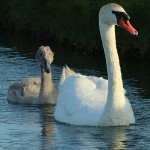




Beautiful! Thank you.